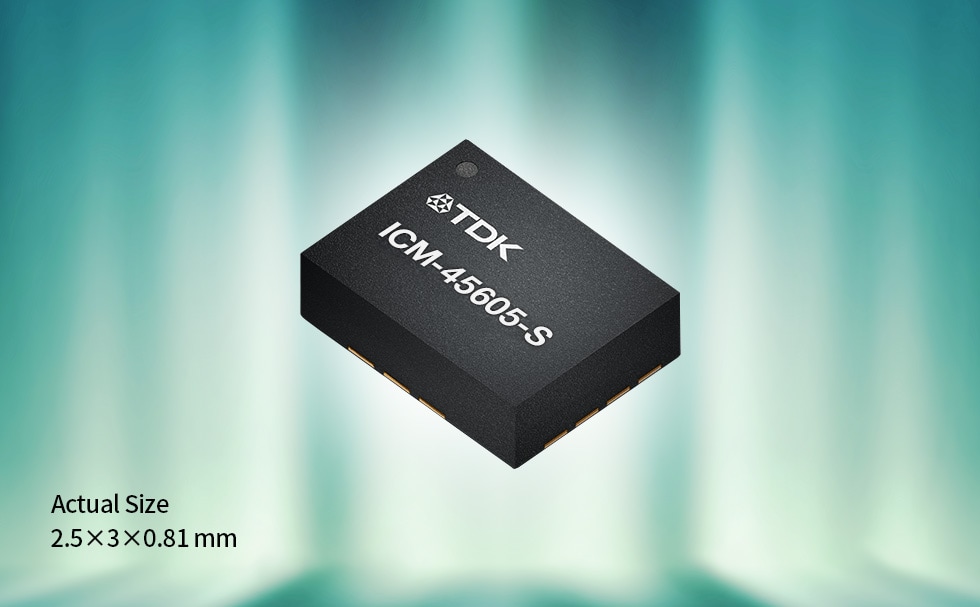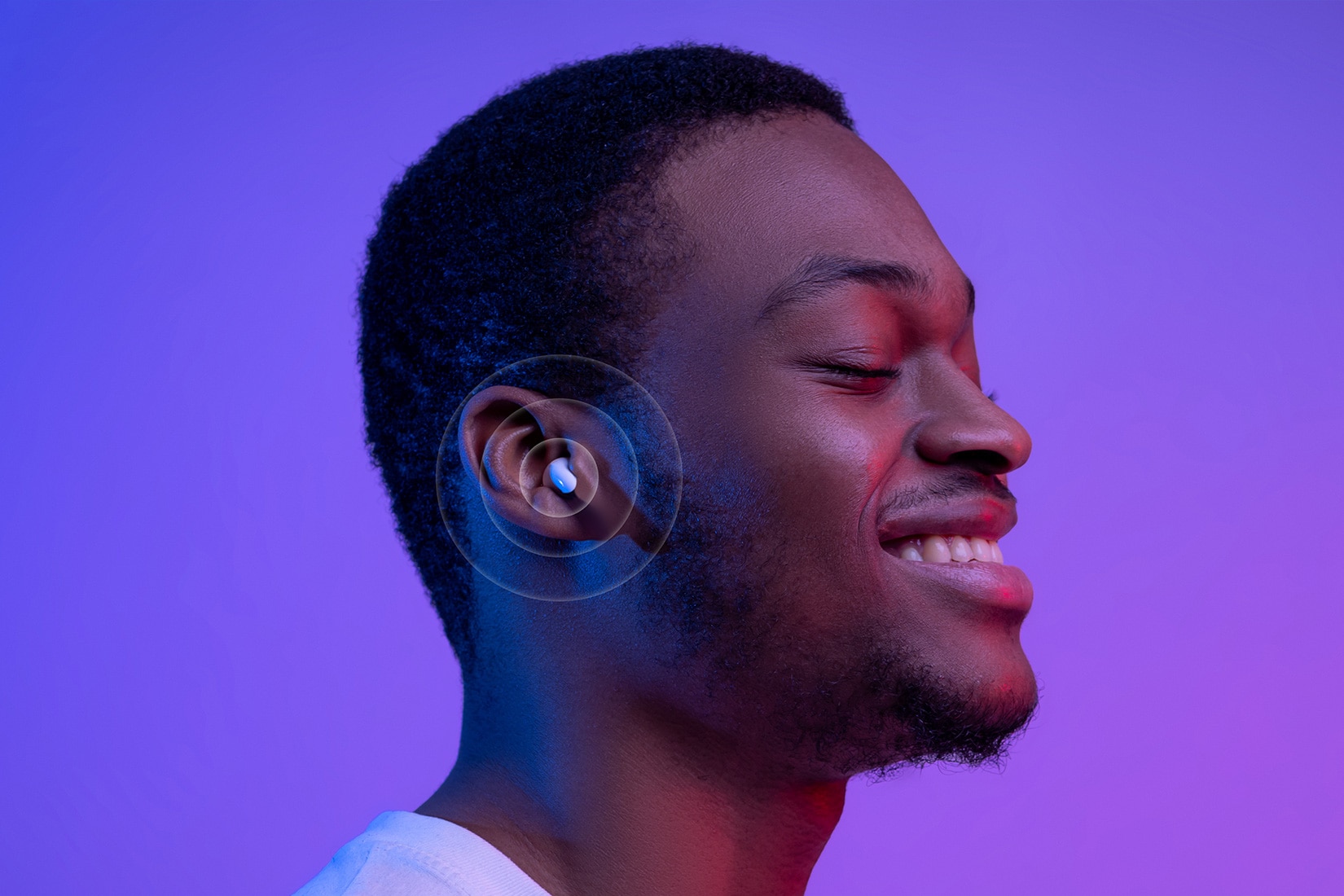

Smarter Hearables Using Advanced
Sensing Solutions Are Expanding the
User Experience
Smart hearables and True Wireless Stereo (TWS) technology represent a significant leap forward and reshape how we interact with our devices and the world around us. Today’s smart hearables offer more than just audio playback. Equipped with advanced microchips and sensor technology, these devices can deliver immersive experiences that go way beyond surround sound, making the user a proactive participant. As the technology continues to grow, TWS is evolving with smarter and more functional hearables that provide comprehensive hearing experiences, whether listening to favorite music or podcasts, enjoying a movie or game, interacting with the metaverse, or talking to a business colleague on a smartphone.
The Growing Benefits of Smart Hearables
With smart hearables, users can seamlessly connect to their smartphones, tablets, or other smart devices with enhanced connectivity. That means users can make or receive calls, access voice assistants, and listen to music without physically interacting with their devices—perfect in our multitasking world.
Smart hearables offer a personalized audio experience using advanced sensor technology to customize the audio output for the user's environment or hearing preferences, providing ultra-immersive sound, noise cancellation, and hands-free operation. With on-chip machine learning customization and reactive audio refinement capabilities, smart hearables ensure an optimal listening experience, whether in a noisy restaurant, a booming concert hall, or a quiet room.
These built-in sensors also facilitate an expanding selection of health or biometric monitoring features. Smart hearables can monitor heart rate or blood pressure, step counts, and even initiate posture or fall alerts. In fact, smart hearable usage is expected to surpass other wearables in the coming years.

How TDK Offers Sensing Solutions to Improve Smart Hearables
TDK introduces the InvenSense VibeSense360™, a tech-forward sensor solutions bundle with an enhanced software suite on-chip. VibeSense360 facilitates features like immersive spatial audio, active noise cancellation, and voice activity detection through sensors that inform the devices and allow the wearer a fully immersive experience.
Audio on the Edge—Machine Learning and SmartEdgeML™
Advancements in microprocessor technology at the edge have transformed smart wearables, enabling them to maintain constant connectivity and operate in an always-on mode, thereby enhancing the quality of the user's life. Sensors have always functioned as raw data sources for an edge processor, enabling various features such as gesture and activity recognition.
InvenSense MEMS sensors have taken a leap forward by enabling complex inferencing and processing on a 2.5 x 3 mm sensor chip. These motion sensors are equipped with an ML-capable motion processor capable of delivering exceptional processing power and transitioning into a state of always-on edge processing. This edge processing technology allows devices like smart earbuds to perform basic ML computations on the sensor itself. It eliminates the need to offload processing tasks to the microprocessor or cloud and significantly improves battery consumption.
Solving the Power Conundrum
To address the power consumption challenges in modern computing, on-chip edge technology presents a compelling solution for shifting processing tasks from the cloud to the local device.
As described by Sahil Choudhary, Product Marketing Director at InvenSense, a TDK Group Company: “Suppose a TWS device maker wants to implement a feature on the edge that can detect a variety of head gestures using machine learning. They can now do that locally and efficiently on InvenSense enabled MEMS sensors without waking up the entire processing system. Once done, the head gesture model will run on the sensor chip at less than 30 microamperes. Through our technology, your power consumption would be significantly reduced because machine learning is happening directly on a sensor chip instead of in the processor or the cloud.”
This approach significantly reduces the need for constant data transmission between the device and the cloud, a process that consumes considerable energy and introduces latency. By embedding advanced processing capabilities directly onto chips within devices, edge computing enables real-time data analysis and decision-making without the latency associated with cloud computing.
This not only conserves battery life by minimizing reliance on big processors or remote servers but also enhances privacy and security, as less data is transmitted over potentially vulnerable networks. Simply put, on-chip edge technology based on sensors allows for more sustainable and efficient operation of IoT devices, smart sensors, mobile devices, and, of course, smart hearables, supporting a greener and more autonomous digital infrastructure.
This paradigm shift toward localized processing represents a key strategy in tackling the energy demands of our increasingly connected world, making technology more responsive, reliable, and eco-friendly.
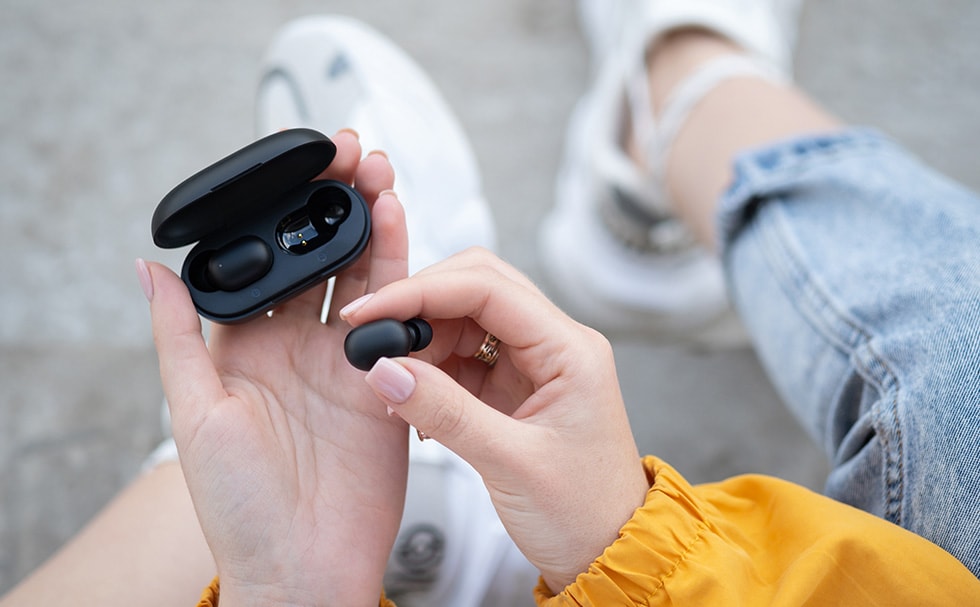
Benefits of Smart Hearables Sensor Technology
Today, people use their smart hearables for multiple functions, from personal entertainment through music and videos to all facets of business activities. With VibeSense360, three crucial elements of motion sensor technology vastly improve the user's experience as they interact with the world.
1. Spatial Audio Using Head Orientation
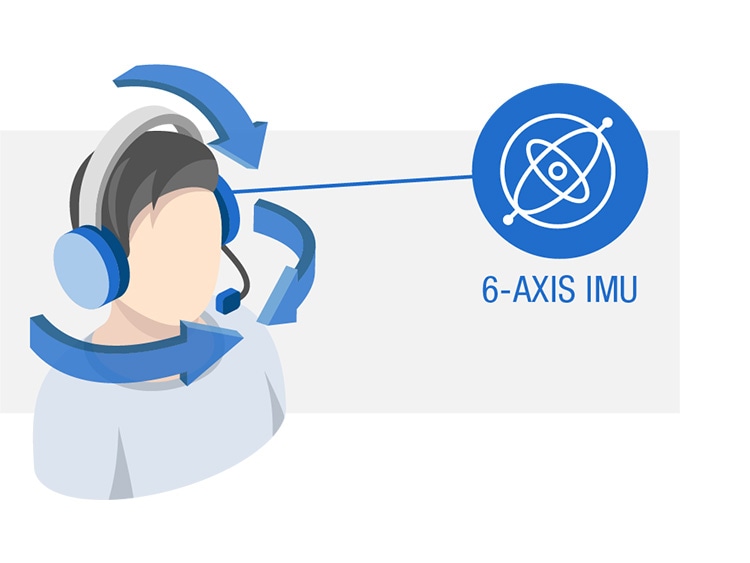
6Sensors for spatial audio are at the forefront of transforming auditory experiences, enabling a three-dimensional sound landscape that mirrors real-world scenarios. These sensors, integrated into audio devices such as over-ear headphones, smart hearables, and AR/VR headsets, detect the user's head movements and orientation to adjust the audio output in real time.
This technology relies on accelerometers, gyroscopes, and head tracking algorithms to accurately track head movement so the sound follows the listener instead of being a static, unidirectional sound. By doing so, spatial audio solutions create an immersive auditory experience, making it feel as though sounds are coming from specific locations in the environment around the listener.
This innovation not only enhances entertainment experiences, such as movies and video games but also offers new possibilities in virtual and augmented reality applications like the metaverse, providing a more realistic and engaging user experience.
2. Active Noise Cancellation with Vocal Vibration Detection and Transparency for Talk
VibeSense360 sensors allow smart hearable users to experience true immersive audio that works for them by disallowing the distractions usually associated with earbud use. Using bone conduction sensing technology, VibeSense360's solution can detect vocal vibrations and adjust the playback to meet the user’s needs by switching the noise cancellation mode to a transparency mode.
For example, a user is listening to music when a call comes in. When the user starts to speak, VibeSense360 detects vocal vibrations and signals to the smart hearable to pause the music automatically. The user doesn’t need to tap an earbud or tell their personal assistant to pause music—it’s automatic and frees the user up to continue the conversation without distractions.
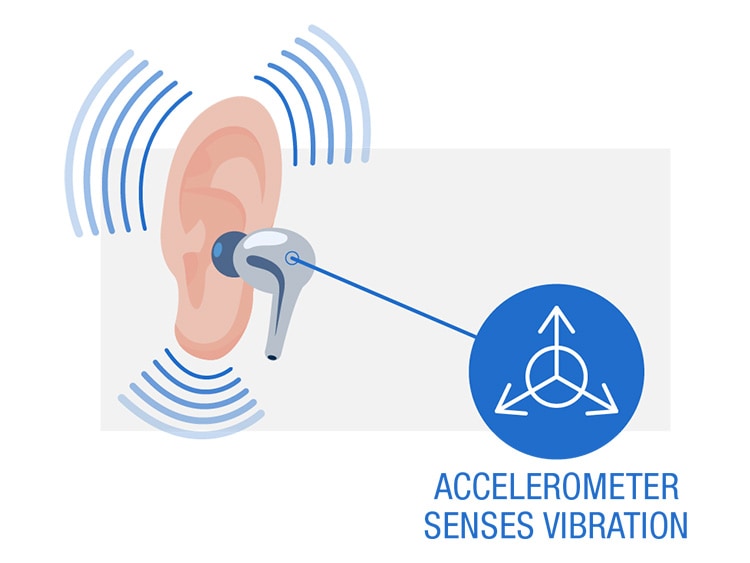

3. Head Gesture Detection
Integrating sensors for head gesture detection in earbuds represents a leap forward in hands-free and accessible technology. These sensors are finely tuned to detect subtle movements and orientations of the wearer's head. By translating specific gestures into commands, users can interact with their devices without needing to touch them.
For instance, a nod to the left could mean play or pause, while a nod to the right might skip a track or reject a phone call. This technology enhances convenience and, through SmartEdgeML can be customized to each user’s preferences. It also opens up new avenues for interaction and accessibility, particularly beneficial for individuals with physical disabilities or when hands-free operation is necessary, such as during exercise or while cooking.
The precision and responsiveness of these sensors are crucial for accurately interpreting gestures and ensuring a seamless user experience. As this technology evolves, it holds the potential to redefine the way we engage with our smart devices, making the interaction more intuitive and integrated into our natural movements.
The Future of Sensing Solutions in TWS Devices
Integrating VibeSense360’s smart sensing solutions in TWS devices provides Original Equipment Manufacturers (OEMs) with significant advancement in audio technology and consumer electronics.
For TWS devices, this means a leap toward more intuitive and seamless interactions, aligning with the user demand for convenience, significantly better battery life, and multi-functionality. Our partners stand to benefit from the differentiation these features offer in a competitive marketplace, enabling them to create more personalized and innovative products.
As we move forward, it's evident that smart sensing solutions will continue to shape the future of personal audio devices, offering exciting possibilities for consumers. The key will be in harnessing these technologies responsibly and creatively to meet users' evolving needs and expectations worldwide.
